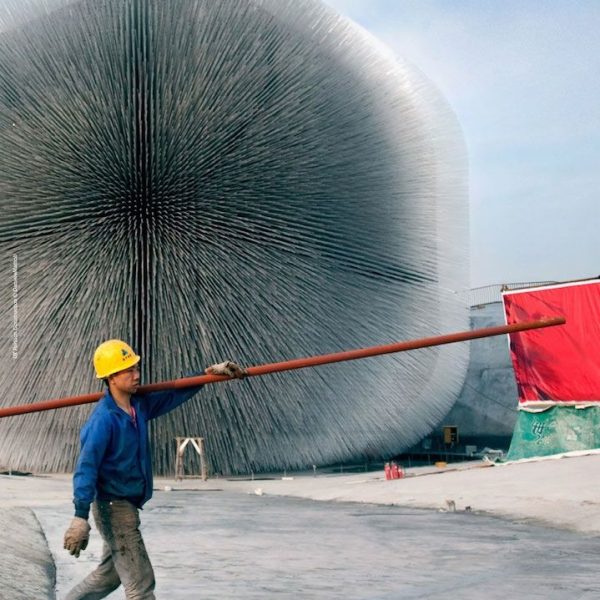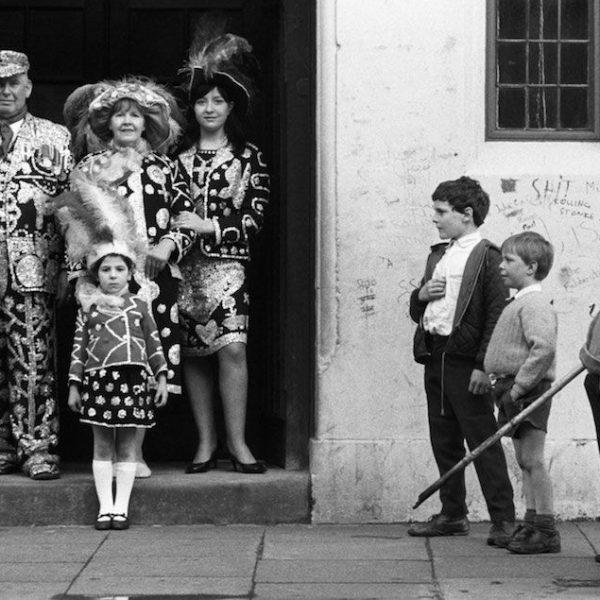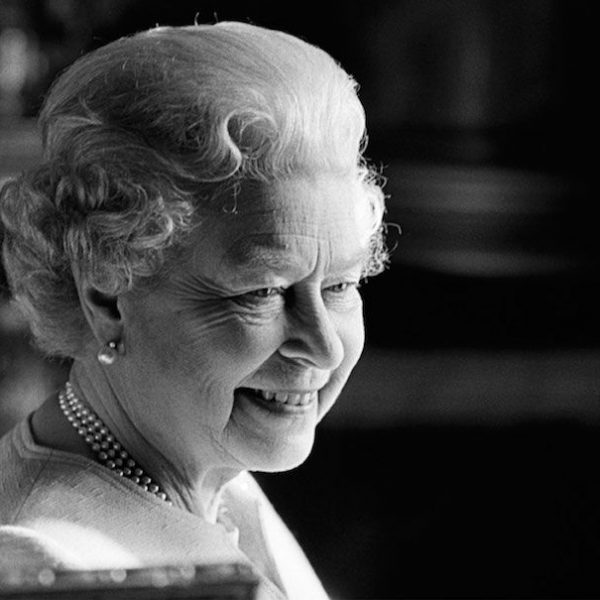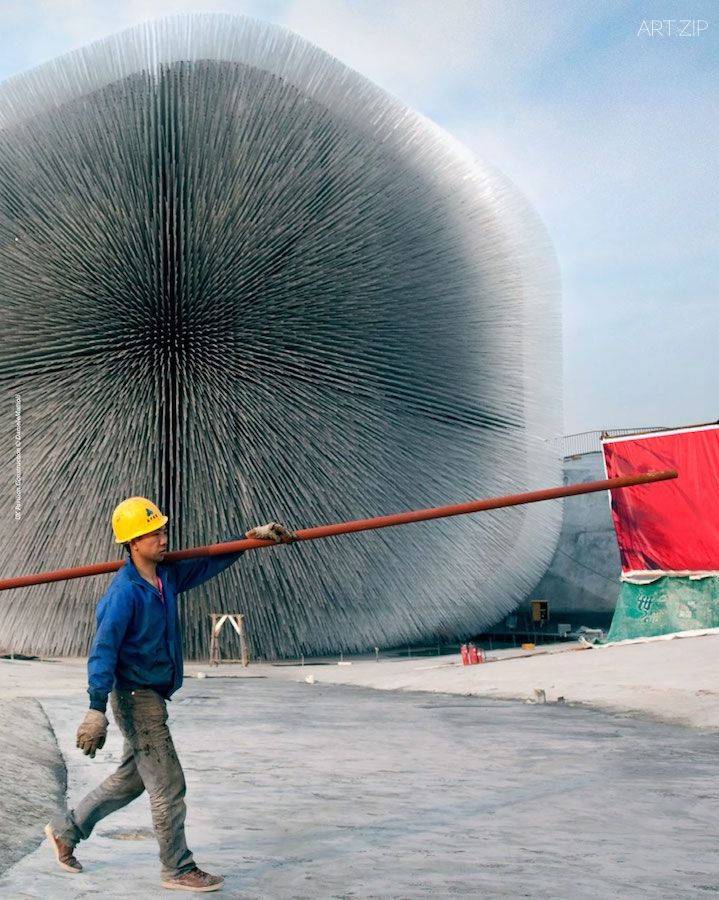
TEXT BY 撰文 x OPHELIA HUANG 黃佳代
I was often asked such a question in my twelve years working on China-UK cultural relations: Why does the UK spend all these money on culture and art in China – is it cultural colonization? An official answer could be that by connecting and creating international opportunities for the people in China and the UK, it builds mutual understanding. One can also understand it in this way: cultural exchange is a soft approach to build a trust, which then enables an easier dialogue in harder areas such as economy and diplomacy. A voice from the bottom of my heart sometimes would add: investment in culture is always good as long as it is grounded and can benefit or inspire individuals.
British Council is one of the earliest foreign cultural organisations with governmental background operating in China, and has been active in Chinese arts scene with exhibitions of significant British artists such as Henry Moore and Antony Gormley since the beginning of 00’s. An ‘arm-length’ organisation as called in the UK, British Council operates in China officially as the Cultural and Education Section of British Embassy, which adds diplomatic glory/mystery and certain sense of authority in the eyes of its Chinese audience.
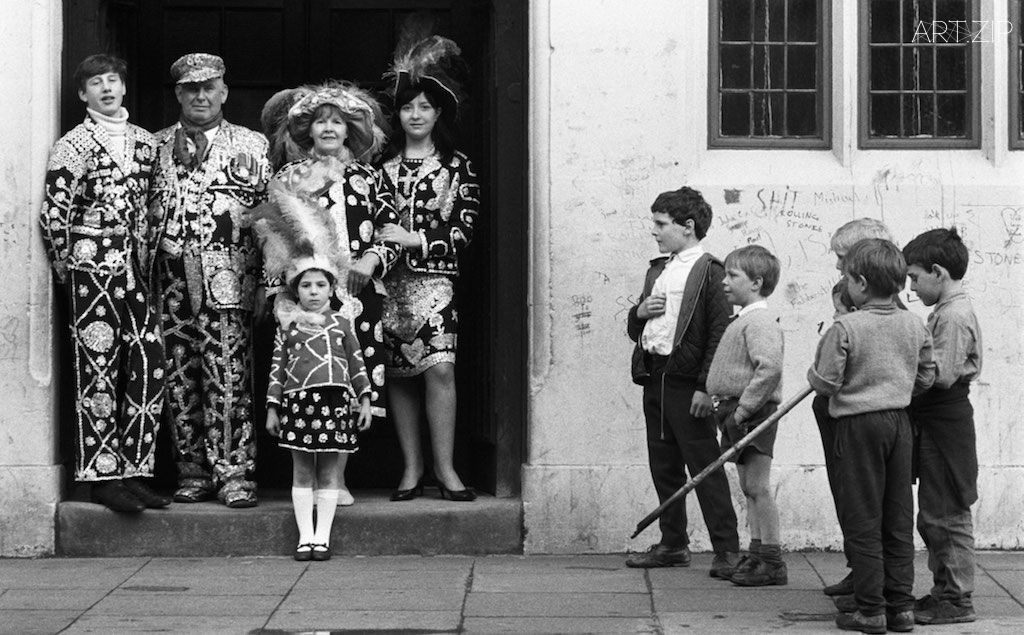
It was the beginning of 2003. The UK was organising a big campaign in China called Think UK before knowing there would be many more to follow in the next ten years. Chinese art organisations slowly started to find their own audience at home. Reform of Chinese state-owned art troupes first experimented on a handful of selected. Despite of attention attracted in international market, the Chinese contemporary art frenzy was yet to come. The first few Chinese independent arts spaces found their places in corners of Beijing, Shanghai or Guangzhou. It was when Arts Council England and British Council pioneered a far-sighted four years initiative called Artist Links China, an artist residency programme between China and the UK. Over 60 artists from different disciplines, including Turner prize nominator, performance artist, composer, and some of most active contemporary artists in China, got supported to spend 4 to 6 weeks in the other country to explore a totally different cultural environment. Most importantly it was a two-way exchange and half of the artists selected were from China. When I and my English colleague were setting up Artist Links, we struggled to find an existing translation for the word ‘residency’ in Chinese and had to explain to our Chinese collaborators why the artists were not required to finish a piece in this programme; while we finished four years later, many Chinese institutions were seeking to start their own international residency programme. Also in 2003, Visiting Arts, originally a department of the British Council, launched the first placement scheme for Chinese arts managers in the UK, full costs covered for the participants. Artistic and professional development of individuals were clearly important to these British institutions.
The golden age of China-UK cultural exchange. Sometimes Chinese cultural workers still refer that period as so, which tells the popularity of UK’s cultural policy towards China at that time. Besides the mentioned Artist Links initiative, artists from China’s independent cultural scene could also be found in British Council’s arts programme in China, which reflected its connection with individuals and grasp of local artistic discourse. For example, in 2005-2006 British Council spent more than a year with Beijing-based sound artist/critic Yan Jun to curate Sound and the City, a sound art project inviting seven key British sound artists to feel and share with Chinese audience, which is still remembered as one of the earliest and most influential sound art projects in China. These well-planned art projects showcased some of the best UK had to offer, a complement to Tony Blair’s Cool Britannia on the other side of the world.
Art programme always needs money. Culture exchange cannot be achieved without resources. While China continues to be on the priority list for Britain’s cultural engagement, thanks to its dazzling economic achievement, global financial crisis in 2008 and the end of 13 years of Labour government in 2010 cast a shadow over UK’s future cultural input in China. Meanwhile, Chinese cultural sector welcomes a period of fast development brought by China’s increasing economic power. China still has a long way to go in terms of global cultural impact, but it has started to attract attention and to demand respect culturally through manifestations such as Beijing Olympic Games in 2008 and Shanghai World Expo in 2010. Too big to ignore, these official spectacles also became the platform for the UK to showcase its culture. Starting from 2008, British Council’s art programme in China was increasingly tinted with governmental tone. It was given demanding official tasks by British government such as organising cultural programme for the UK Pavilion in Shanghai World Expo 2010, as well as to build a closer relationship with increasing number of the UK stakeholders and their aspirations in China. With more demand, higher expectation and UK’s public sector cuts, it is not difficult to see that organisations like British Council have to attract and work much closer with Chinese partners, or to be precise, those who have resources. Meanwhile, the quickly developing Chinese cultural sector and increasing cultural exchanges between China and other counties makes it a challenge for the UK to maintain its leading position with China.
All fashions of big-scale cultural events (with big titles) flourish in China in recent years. Several ‘Cultural Year’ between China and foreign country are introduced to Chinese audience almost in every year, all of different scale and focus. International cultural exchange programmes have covered many second or even third tier Chinese cities that very few British people know where they are. With the impact of London Olympics, British Council put together more than two hundred art projects across China under the banner of ‘UK Now’ in eight months during 2012. At the beginning of 2015, launched by Duke of Cambridge in his first China visit, British Council again prepared a six month season of UK arts in China with dozens of exhibitions, performances, talks etc., aiming to reach millions of Chinese just like UK Now, as part of the first-ever official UK-China Year of Cultural Exchange. Actually these arts projects were mostly delivered and financed by Chinese cultural or even commercial organisations. The role of British Council has moved from the organiser of cultural exchange, to broker or an official platform builder. With backdrop such as UK Now or Year of Cultural Exchange, it seeks the goal of increasing numbers, both in terms of audience and money from China. And of course, China is the place to be if you are looking for big digits. The stunning numbers demonstrate the ability and aspiration of Chinese organisations to work internationally. Yet it also reminds me of the subtle doubting voice among ordinary Chinese people which echoes many aspects of living in present China, ‘China is full of spectacles and good-looking numbers: economic growth, sale, GDP, highrises, but can they represent everything about us? What’s beyond the numbers?’ Back to the increasingly ‘officialized’ cultural exchange between China and the UK, the voices of individual artists and small-scale/independent organisations are struggling to be heard in the busy stage full of governments, big institutions and capital.
UK’s Cultural sector may marvel at the on-going Chinese trend of building new cultural landmarks such as museums and grand theatres, which gives outsider an impression of a huge cultural market to be filled. ‘Market’ seems to be the word found in every discussion related to China at present, commercially, and even culturally for non-for-profit organisations like British Council. Chinese interests in cultural collaboration and artistic exchange with the UK are at risk to be considered together with other ‘business opportunities’. Some still remember that Britain waged the Opium Wars against China in the name of trade in 19th century. The wars are history now, but globalized capital move and economic activities are bringing people around the world much closer to each other regardless different histories and cultural traditions. A crowded world needs dialogue and mutual understanding more than ever. Nobody would love the idea of being considered merely as a market, whether the goods to be sold are luxury brands, art or ideology. Perhaps we all should put aside terms such as ‘market’ and ‘resources’ sometimes to have a true dialogue about mutual understanding and trust.
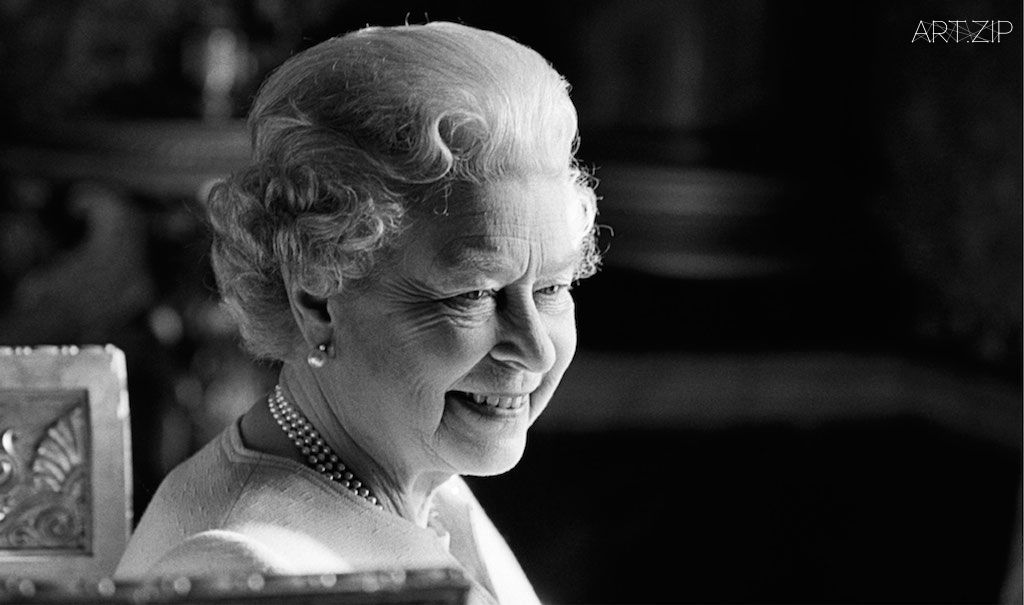
在從事中英文化交流的十二年裡,我常被問到一個問題:為什麽英國要花這麽多錢來中國做文化藝術,是文化殖民嗎?官方的答案似乎是:文化交流可以增進兩國之間的相互了解。誠實的答案是:通過文化藝術這樣的軟性交流建立起信任之後,經濟、外交等領域的事務也許能更加順暢。我心底的聲音是:只要是實實在在地做內容,並能最終對個人有所幫助或啟發,文化上的投入總是好事。
英國文化教育協會(British Council)是最早一批在中國開展文化交流的外國官方文化機構,並在零零年初通過《摩爾在中國(Henry Moore in China)》雕塑作品展等大型項目為中國藝術界所了解。在英國,它因其和英政府(特別是外交部)之間緊密但又不完全附屬的關系,被形象地稱為“一臂之遙”機構。但也因為它的這種特殊性質,英國文化教育協會在中國並未作為獨立機構註冊,而被一攬子掛在了英國大使館的旗下,作為使館的“文化教育處”開展工作。它也因此被賦予了更多官方意味和神秘色彩。
2003年初,英國正在中國舉辦從經貿文教各方面展示英國的“Think UK”大型活動;中國的藝術機構剛開始培養自己的觀眾;國有文藝院團的體制改革剛開始試點;中國當代藝術開始在國際市場上受到關註,但瘋狂的拍賣熱捧還沒有到來;最早的一批中國獨立藝術空間孤獨地散落在北上廣。在這樣的大環境下,英格蘭藝術委員會(Arts Council England) 和英國文化教育協會極有遠見地設立了一個為期四年的中英藝術家駐地交流計劃“Artist Links”。項目不分藝術類別,不要求藝術家一定要完成一件新作,三四年中共有超過60位藝術家受到資助進行異國駐地創作,而且最可貴的是,中英各占一半。在這些藝術家中,有來自英國的特納獎提名者、作曲家、行為藝術家,也有中國當代藝術界當時最為活躍的一批名字。2003年項目建立之初,我需要不少解釋才能讓中國同行們理解當時國內還很少見的駐地創作的概念;四年之後,隨著中國藝術機構自身的蓬勃發展,有不少機構已在籌劃自己的國際駐地計劃。同時,英國文化教育協會的兄弟機構英國訪問藝術署(Visiting Arts)也在2003年開始了第一屆中國藝術管理者的英國培訓項目,並全額承擔費用。可以說,這些英國官方機構,都關註並支持著中國藝術家和藝術管理者的個體發展。
那一段時期,有時會被中國同行們半開玩笑地稱作中英藝術交流的黃金時代。不論此說法是否有失偏頗,它至少反映出了與中國文化領域的發展情況,以及其他國家在華的工作內容相比,英國當時在中國的藝術交流頗得人心。對藝術界個體和前沿的關註還體現在英國文化教育協會的項目策劃中,例如與中國獨立藝術家策劃人聯手精心籌備一年多的聲音藝術項目《都市發聲(Sound and the City)》,以及對英國小劇場戲劇作品的引介等等。這些項目對英國的藝術做了有力的推廣,也體現了這個外國機構對中國當時藝術發展趨勢的深入理解和把握。同時這也是當時布萊爾的工黨政府力圖塑造的“酷英國”形象在中國的一個縮影。
但這樣的力度,需要大量的投入。文化交流,不論其目的,都是一項燒錢的事業。中國因為其經濟力量的發展,近二十年來是英國對外文化交流的一塊重地。但08年金融危機和10年保守黨上台,也似乎意味著英國對外不求回報的大手筆投入是無法長期維系的。與此同時,中國國力日漸強盛,國內文化事業和產業也隨之有了迅速發展。雖然其在國際文化影響力上和英國這樣的“老牌資本主義國家”依舊差距巨大,但通過北京奧運會和上海世博會這樣的展示機會,中國政府越來越吸引著外國機構的注意和尊重。這些政府層面的交流展示也成為了英國在中國的文化活動的重要平台。從08年開始,英國文化教育協會的藝術項目之官方色彩和政府背景日漸加強。它還參與或承擔了為北京奧運會閉幕式倫敦交接和上海世博會英國館官方藝術活動的大量協調組織工作,消耗了不少人力物力。與此同時,英國也在不斷削減公共開支。資源有限的雙重制約之下,和中國機構合作、吸引和利用中方的資源投入成為了英國唯一的選擇。但與此同時,中國藝術領域的發展,中國政府對文化實力的日漸重視,以及其他國家如法德荷在藝術交流上的持續投入,都使得英國越來越難以維持其在中國的領先位置。
近十年的中國,最不缺的就是各種大型的文化事件。幾乎每年中國都會與數個國家有規模不一的雙邊文化年,來自不同國家的藝術交流項目更從北上廣覆蓋到二三線城市。2012年結合倫敦奧運效應,英國在中國舉辦了為期大半年的“藝述英國(UK Now)”,有兩百余個活動。2015年初經過大半年的籌備又借威廉王子訪華啟動了中英文化年並組織了幾十個項目。事實上這些活動大多數都依賴中國文化甚至商業機構來組織並投入相當的資源,由中方直接與英國內容對接。英國文化教育協會則從過去的組織者,轉變為官方的平台搭建者,並希望通過這些平台吸引到更多來自中國的資源。數量上的增長,一方面反映了中國機構自身國際合作實力的迅速提高,一方面也提出了一個在中國很普遍的“數字能否代表一切”論題。而從另一個角度來看,在官方和機構色彩愈發濃重的中英文化交流中,那些本來就缺少資源的中國藝術家個體或者民間機構,在政府、大機構和大資本競相角力的這個舞台上,越來越難以獲得關注。
近年中國井噴式的文化場館建設風潮,讓英國同行羨慕之余,也似乎帶來了一個巨大文化市場有待填補的印象。市場這個詞,在近幾年,越來越多地出現在所有與中國相關的討論中,經濟上如此,像英國文化教育協會這樣的專門從事文化交流的非盈利機構,竟似乎也無法避免。同時中國機構的合作意向也有被單純視作“商業機會”的危險。有時,我甚至會想起一百多年前,英國人來到中國,為了貿易和市場不惜挑起戰爭。今天,當年的硝煙自然早已散去,但無論地球上來自不同的傳統的人們願不願意,全球化的資本和經濟活動都使你我之間的距離變得越來越近。世界越擁擠,就越需要溝通和相互理解。大概沒有人會願意自己僅僅被看做是一個市場,不論這市場上待出售的是奢侈品、藝術還是意識形態。也許,要真正地討論不同文化間的相互理解和平等信任,還需要雙方都偶爾放下市場和資源這之類的概念吧。

